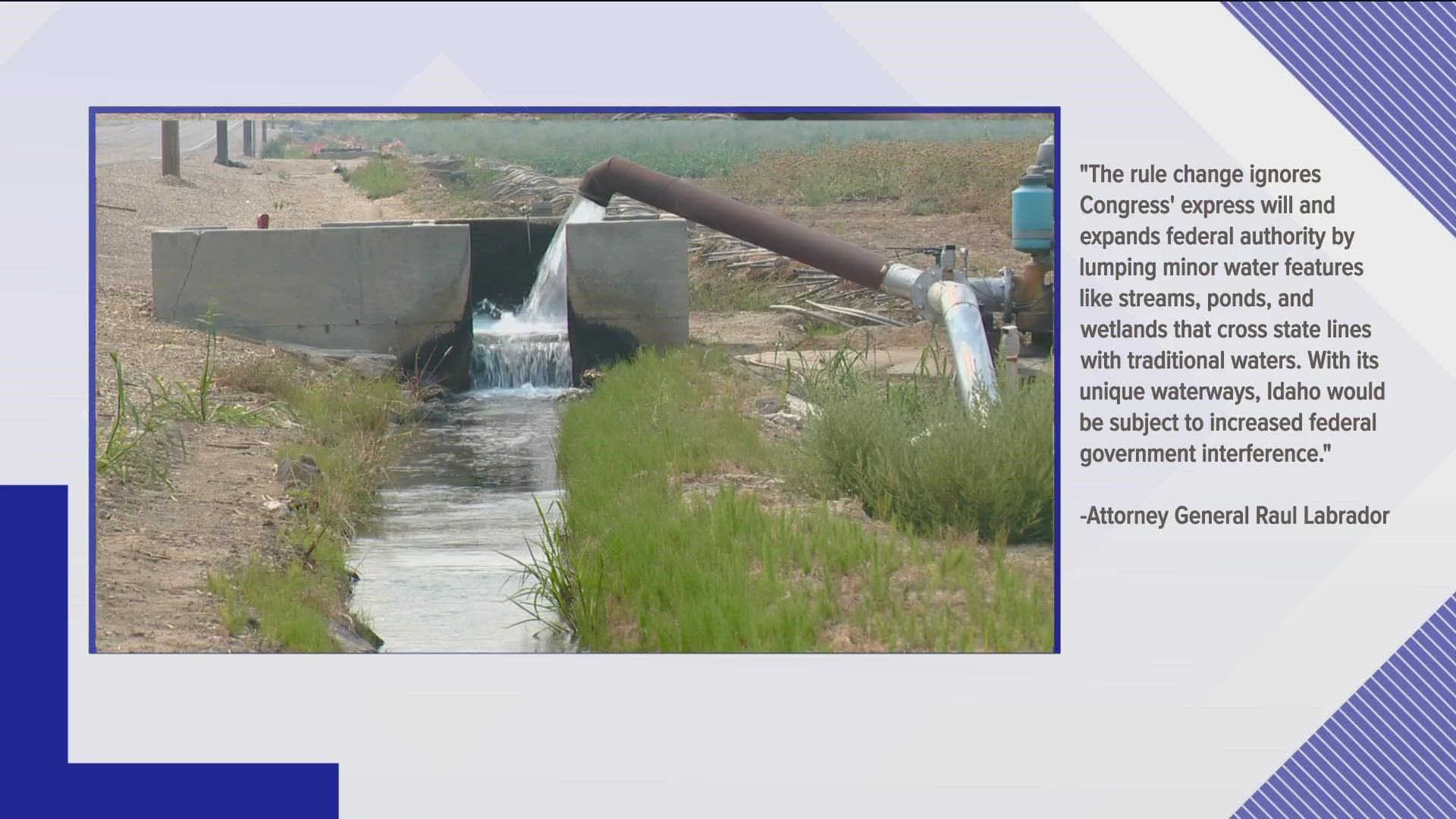IDAHO, USA — Attorney General Raul Labrador has joined a lawsuit filed by Texas over the "Waters of the United States" (WOTUS) rule that determines which waters and rivers in the country fall under federal or state regulations.
The lawsuit claims that agencies in the federal government have too much authority over the country's waters and are trying to expand their control over state's rights. This comes after Labrador had not joined a lawsuit led by 24 other states that was filed in February.
"I am proud to join Texas in this fight against the Biden administration," Labrador said. "Another day, another attempt by the Biden administration to target Idaho's ability to control our natural resources. This unlawful federal encroachment threatens the sovereignty of Idaho, and we will not allow it."
WOTUS defines what waters qualify for protection under the Clean Water Act. On Dec. 30, 2022, the Environmental Protection Agency (EPA) and U.S. Army Corps of Engineers announced the revised definition of WOTUS rule and it goes into effect Mar. 20, 2023.
According to the EPA, the agencies,"[considered] the best available science and extensive public comment to establish a definition of 'waters of the United States' that supports public health, environmental protection, agricultural activity, and economic growth."
KTVB reached out to the EPA, but they will not comment on the litigation. However, the agency did send fact sheets and the final rule codifies eight exclusions from the WOTUS definition, prior converted croplands, waste treatment systems, ditches, artificially irrigated areas, artificial lakes or ponds, artificial reflecting pools or swimming pools, waterfilled depressions and swales and erosional features.
The rule also defines what waters that the agencies defined as being deemed to be protected under the Clean Water Act. It includes categories for, traditional navigable waters, the territorial seas, and interstate waters, jurisdictional impoundments of “waters of the United States," jurisdictional tributaries, jurisdictional adjacent wetlands and intrastate lakes and ponds, streams, or wetlands not identified in categories.
The WOTUS rule replaces the Trump administrations Navigable Waters Protection Rule that went into effect in 2020 and had a much longer list of waters that were excluded from the Clean Water Act.
The lawsuit joined by Labrador states that the definition of waters under the new rule intrudes on state sovereignty and the liberties of states and their citizens.
"The Final Rule also lacks clarity, leaving those wishing to identify the ambit of federal power over dry land or minor water features at the mercy of an expensive, vague, and arbitrary analysis, lest they face a staggering criminal or civil penalty," the lawsuit states.
The EPA states that the final rule restores essential water protections that were in place prior to 2015.
"As a result, this action will strengthen fundamental protections for waters that are sources of drinking water while supporting agriculture, local economies, and downstream communities," a press release from the EPA states.
Watch more Local News:
See the latest news from around the Treasure Valley and the Gem State in our YouTube playlist:

